Dibasic Calcium Phosphate Market Overview:
The global market for Dibasic Calcium Phosphate (DCP) is experiencing steady growth, driven by its applications across industries such as pharmaceuticals, animal feed, food and beverages, and agriculture. This market includes various forms such as anhydrous, dihydrate, and feed-grade DCP. Our report provides an in-depth analysis of procurement trends, highlighting cost optimization strategies and the adoption of advanced tools to enhance procurement and supply chain efficiency.
Key future challenges in procurement include fluctuating raw material costs, ensuring consistent quality standards, and addressing sustainability concerns. Digital procurement tools and strategic sourcing are critical for optimizing the DCP supply chain and maintaining competitiveness. As global demand rises, companies are leveraging market intelligence to enhance efficiency and mitigate risks.
The Dibasic Calcium Phosphate market is anticipated to exhibit sustained growth through 2032, with key highlights including:
- Market Size: The global Dibasic Calcium Phosphate market is projected to reach USD 1.306 billion by 2032, growing at a CAGR of approximately 5.60 % from 2024 to 2032.
Growth Rate: 5.60% 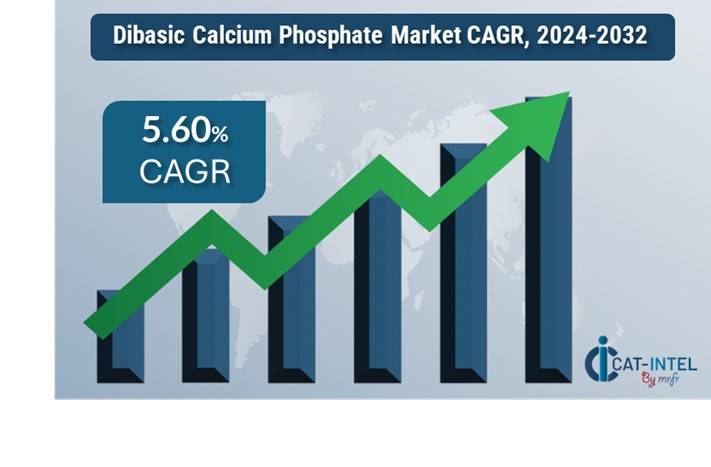
- Sector Contributions: Growth in the market is Driven by:
- Pharmaceutical Industry Demand: Increasing use of DCP as a tableting agent and nutritional supplement.
- Animal Feed Applications: Rising adoption of DCP as a dietary supplement for livestock to ensure optimal growth and bone health.
- Technological Advancements: Enhanced production techniques such as wet granulation and spray drying improve product quality and consistency.
- Innovations: Development of microencapsulated DCP to enhance bioavailability and stability in pharmaceutical and feed applications.
- Regional Insights: Asia Pacific remains a significant contributor due to a robust agricultural sector and growing pharmaceutical industries.
Key Trends and Sustainability Outlook:
- Digital Integration: Automation in production and inventory management is reducing operational inefficiencies and ensuring supply chain resilience.
- Advanced Materials: Development of feed-grade DCP with enhanced digestibility and minimal impurities.
- Sustainability Focus: Increasing adoption of eco-friendly production practices and sourcing of raw materials from sustainable sources.
- Customization Trends: Rising demand for DCP formulations tailored to specific nutritional and industrial applications.
- Data-Driven Manufacturing: Utilization of analytics to monitor production efficiency and maintain stringent quality standards.
Growth Drivers:
- Pharmaceutical Sector Expansion: Increasing demand for DCP in the production of tablets, capsules, and nutritional supplements.
- Animal Nutrition Needs: Growing reliance on DCP as a source of phosphorus and calcium for livestock and poultry.
- Sustainability Initiatives: Investments in environmentally friendly manufacturing processes to meet regulatory and consumer expectations.
- Regulatory Compliance: Adherence to stringent quality standards in pharmaceutical, food, and feed industries.
- Customization Opportunities: Rising demand for niche applications such as fortified food products and veterinary supplements.
Overview of Market Intelligence Services for the Dibasic Calcium Phosphate Market:
Recent analyses underscore challenges such as fluctuating phosphate rock prices and the need for highly purified DCP for specialized applications. Market intelligence reports provide actionable insights into procurement opportunities, enabling companies to identify cost-saving measures, optimize supplier relationships, and enhance supply chain resilience. These insights also ensure compliance with regulatory standards while maintaining cost-effectiveness and quality.
Procurement Intelligence for Dibasic Calcium Phosphate: Category Management and Strategic Sourcing:
To remain competitive in the Dibasic Calcium Phosphate market, companies are refining procurement processes through spend analysis and supplier performance monitoring. Effective category management and strategic sourcing play a crucial role in reducing procurement costs and ensuring a reliable supply of high-quality DCP. By leveraging actionable market intelligence, businesses can enhance procurement strategies, negotiate favourable terms, and secure their supply chains effectively.
Pricing Outlook for Dibasic Calcium Phosphate: Spend Analysis
The pricing outlook for Dibasic Calcium Phosphate is expected to remain moderately stable, with potential variations influenced by several key factors. Changes in raw material costs, such as phosphate rock and calcium carbonate, fluctuations in energy prices, and evolving regulatory standards for quality and safety are significant drivers of DCP price trends. Additionally, the rising demand for feed-grade and pharmaceutical-grade DCP is contributing to upward price pressures.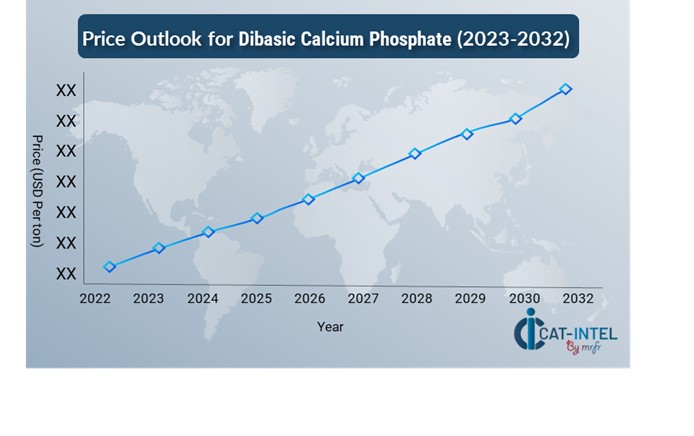 Graph shows general upward trend pricing for dibasic calcium phosphate and growing demand. However, there may be fluctuations influenced by economic conditions, technological advancements, and competitive dynamic.
Graph shows general upward trend pricing for dibasic calcium phosphate and growing demand. However, there may be fluctuations influenced by economic conditions, technological advancements, and competitive dynamic.
Efforts to streamline procurement processes, improve supplier management, and adopt innovations in production techniques are essential for controlling costs. Leveraging digital tools for market monitoring, price forecasting through analytics, and efficient inventory planning can further enhance cost management.
Partnering with dependable DCP suppliers, negotiating long-term contracts, and optimizing production workflows are key strategies to effectively manage pricing. Despite these challenges, maintaining product quality, aligning with regulatory standards, and adopting advanced manufacturing techniques will be critical to sustaining cost efficiency.
Cost Breakdown for Dibasic Calcium Phosphate: Total Cost of Ownership (TCO) and Cost-Saving Opportunities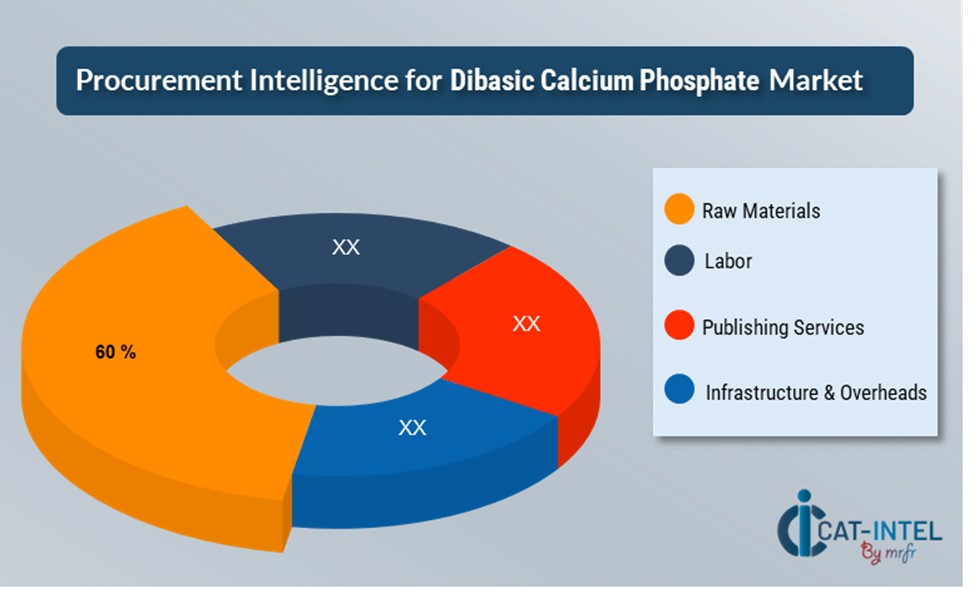
- Raw Materials (60%)
- Description: The primary costs in DCP procurement include the purchase of raw materials such as phosphate rock, calcium carbonate, and sulfuric acid. These costs are significantly influenced by global material availability, market demand, and regional sourcing conditions.
- Trends: Companies are adopting strategies such as bulk material purchases, long-term supplier agreements, and sourcing from regional suppliers to mitigate price volatility. The increased focus on high-purity raw materials for pharmaceutical-grade applications is also shaping price trends.
- Labor (XX%)
- Publishing Services (XX%)
- Infrastructure & Overheads (XX%)
Cost-Saving Opportunities: Negotiation Levers and Purchasing Negotiation Strategies
In the Dibasic Calcium Phosphate (DCP) industry, optimizing procurement processes and employing strategic negotiation tactics can lead to substantial cost savings and enhanced operational efficiency. Establishing long-term agreements with DCP suppliers, particularly in regions with high production capacity, can secure better pricing and favorable terms, such as volume discounts and lower transportation costs. Bulk purchasing and forward contracts offer opportunities to stabilize costs and mitigate the effects of price volatility.
Collaborating with suppliers that prioritize innovation and sustainability can provide additional benefits, including access to high-quality DCP formulations and cost reductions through advanced manufacturing techniques. Implementing digital tools for supply chain management, such as real-time inventory tracking and demand forecasting systems, enhances operational efficiency, reduces stockouts, and minimizes procurement costs. Diversifying supplier networks and adopting multi-supplier strategies can mitigate risks such as raw material shortages or production disruptions, while also strengthening negotiation leverage.
Supply and Demand Overview for Dibasic Calcium Phosphate: Demand-Supply Dynamics and Buyer Intelligence for Effective Supplier Relationship Management (SRM)
The Dibasic Calcium Phosphate market is experiencing consistent growth, driven by rising demand across industries such as pharmaceuticals, animal feed, and food production. The balance between supply and demand is shaped by factors like raw material availability, production efficiency, and global market conditions.
Demand Factors:
- Pharmaceutical Applications: The increasing use of DCP as a tablet excipient and nutritional supplement is driving significant demand in the pharmaceutical sector.
- Animal Nutrition: Growing reliance on DCP as a dietary phosphorus and calcium source for livestock and poultry.
- Food Industry Needs: Use of DCP as a leavening agent and mineral fortifier in food products.
- Customization Trends: Rising demand for specialized DCP formulations tailored to specific industry applications, such as high-purity grades for pharmaceuticals and microencapsulated forms for enhanced bioavailability.
Supply Factors:
- Raw Material Costs: Availability and pricing of phosphate rock and calcium carbonate are critical factors affecting DCP supply.
- Technological Advancements: Innovations in production processes, such as wet granulation and spray drying, are enhancing supply reliability and quality consistency.
- Regulatory Compliance: Adherence to international safety and quality standards influences the availability and marketability of DCP products.
- Operational Efficiency: Streamlined production workflows and optimized logistics systems are ensuring consistent supply and shorter lead times.
Regional Demand-Supply Outlook: Dibasic Calcium Phosphate
The Image shows growing demand for Dibasic Calcium Phosphate in both Asia Pacific and North America, with potential price increases and increased Competition.
Asia Pacific: Dominance in the DCP Market
The Asia Pacific region, led by countries such as China and India, is a major contributor to the global Dibasic Calcium Phosphate market, driven by several factors:
- High Production Capacity: The region accounts for a significant share of global DCP manufacturing, supported by well-established industrial infrastructure and cost-efficient production methods.
- Technological Advancements: Integration of advanced manufacturing techniques, such as automated granulation and energy-efficient drying, has improved supply efficiency.
- Growing Agriculture and Pharmaceutical Sectors: The expanding livestock industry and increasing pharmaceutical production in Asia Pacific are driving robust demand for DCP.
- Sustainability Initiatives: Manufacturers in the region are adopting eco-friendly practices, including the use of renewable energy sources and sustainable raw material sourcing, to meet global environmental standards.
- Innovation-Driven Growth: Investments in R&D for customized formulations and enhanced bioavailability are enabling the region to address diverse market needs effectively.
Asia Pacific Remains a key hub Dibasic Calcium Phosphate price drives Innovation and Growth. 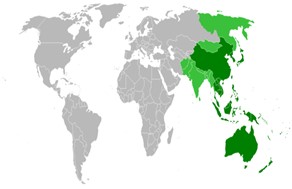
Supplier Landscape: Supplier Negotiations and Strategies
The supplier landscape in the Dibasic Calcium Phosphate (DCP) market is diverse and highly competitive, comprising a mix of global and regional players influencing industry trends. These suppliers play a critical role in shaping pricing, material quality, and product innovation. The market is dominated by established manufacturers offering a broad range of DCP grades, while smaller, specialized suppliers focus on niche requirements, such as high-purity formulations and microencapsulated variants.
The DCP supplier ecosystem in major production regions includes key global leaders and emerging regional players addressing the growing demand across sectors like pharmaceuticals, animal feed, and food production. Suppliers are enhancing production capacities, adopting advanced manufacturing technologies, and integrating sustainable practices to deliver high-quality, cost-effective, and environmentally friendly DCP solutions.
Key Suppliers in the Dibasic Calcium Phosphate Market Include:
- Innophos Holdings, Inc.
- Mosaic Company
- Nitta Gelatine Inc.
- Reenjoy Laboratories
- OCP Group
- Jost Chemical Co.
- Ning Xiang Xingmu Fine Chemicals Co., Ltd.
- Phosphea (Groupe Roullier)
- Brenntag AG
- Yara International ASA
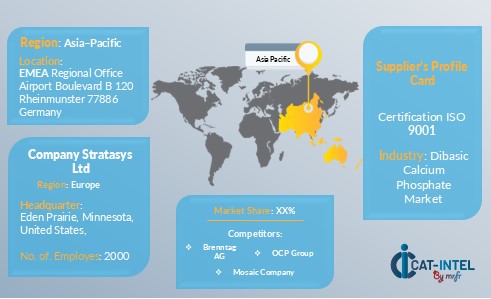
Key Developments Procurement Category Significant Development:
|
Significant Development |
Description |
|
Market Growth |
The Dibasic Calcium Phosphate market is experiencing steady growth driven by rising demand in sectors such as pharmaceuticals, animal nutrition, and food production, particularly in emerging markets. |
|
Sustainability Focus |
There is an increasing emphasis on environmentally friendly practices, with a growing preference for sustainably sourced raw materials and production methods to minimize environmental impact. |
|
Product Innovation |
Manufacturers are expanding their product portfolios, offering high-purity grades, microencapsulated DCP for targeted applications, and specialized formulations tailored for specific uses like animal feed and dietary supplements. |
|
Technological Advancements |
Innovations in production processes, such as energy-efficient manufacturing techniques and precision chemical processing, are enhancing product quality, consistency, and cost-effectiveness. |
|
Global Trade Dynamics |
Changes in international trade policies, tariffs, and regional economic agreements are influencing the DCP supply chain, impacting raw material availability and market pricing. |
|
Customization Trends |
The demand for DCP tailored for specific applications, such as granulated forms for direct compression in pharmaceuticals and feed-grade DCP for livestock nutrition, is increasing. |
|
Dibasic Calcium Phosphate Attribute/Metric |
Details |
|
Market Sizing |
The global Dibasic Calcium Phosphate market is projected to reach USD 1.306 billion by 2032, growing at a CAGR of approximately 5.60 % from 2024 to 2032. |
|
DCP Technology Adoption Rate |
Around 50% of manufacturers are adopting advanced production technologies, such as precision chemical processing and energy-efficient methods, to enhance efficiency and sustainability. |
|
Top Industry Strategies for 2024 |
Key strategies include focusing on product quality, optimizing supply chain management, adopting eco-friendly production techniques, and offering customized solutions for diverse applications. |
|
Process Automation |
Approximately 40% of DCP manufacturers have implemented automation in production, quality control, and packaging to improve productivity and reduce operational costs. |
|
Process Challenges |
Major challenges include managing raw material price fluctuations, meeting stringent regulatory standards, ensuring consistent product quality, and addressing supply chain disruptions. |
|
Key Suppliers |
Leading suppliers in the DCP market include Innophos Holdings, Inc., EuroChem Group, and Nutrien Ltd., offering diverse solutions tailored to industry-specific needs. |
|
Key Regions Covered |
Prominent DCP manufacturing regions include Asia-Pacific, Europe, and North America, with significant demand across pharmaceuticals, animal feed, and food production industries. |
|
Market Drivers and Trends |
Growth is driven by the rising demand for high-purity DCP, advancements in production technology, the need for cost-effective nutritional supplements, and increasing customization for industry-specific applications. |
Frequently Asked Questions (FAQ):
Our procurement intelligence services provide in-depth analysis of the DCP supplier market, identifying major producers and evaluating industry trends. We offer spend analysis, supplier evaluations, and sourcing strategies to help secure reliable DCP suppliers at competitive prices.
We assist in assessing the TCO for DCP by accounting for raw material costs, manufacturing expenses, transportation fees, and sustainability practices. This comprehensive analysis ensures a clear understanding of the overall financial impact of sourcing DCP.
Our risk management services address challenges such as material price fluctuations, supply chain disruptions, and compliance with sustainability regulations. These strategies support secure, cost-effective DCP procurement processes.
Our Supplier Relationship Management (SRM) services focus on fostering strong partnerships with DCP manufacturers. We assist in contract negotiations, track supplier performance, and streamline their integration into your supply chain.
We recommend best practices such as supplier segmentation, cost analysis, quality assurance, and monitoring supply chain efficiency. These practices enable effective and transparent DCP procurement.
Digital tools optimize DCP procurement by automating supply chain processes, improving inventory management, and streamlining order handling. These advancements reduce costs and enhance operational performance.
Our supplier performance management services evaluate key metrics such as delivery timeliness, product quality, and compliance with sustainability standards. This ensures reliable supplier performance over the long term.
We support negotiations by leveraging market insights, benchmarking costs, and utilizing strategies such as bulk purchase agreements and flexible delivery terms. These approaches secure advantageous terms with DCP suppliers.
We offer tools that provide detailed insights into material costs, supplier trends, and production forecasts. These resources enable data-driven decision-making for your DCP procurement strategies.
We help you adhere to industry regulations and internal policies by ensuring that suppliers meet environmental, safety, and quality standards. This maintains compliance across all sourcing activities.
We recommend diversifying suppliers, implementing contingency plans, and establishing alternative logistics channels to minimize supply chain disruptions in DCP procurement.
Our tracking solutions monitor performance metrics such as delivery accuracy, product quality, and service consistency. This helps evaluate supplier reliability and inform future sourcing decisions.
We identify suppliers focusing on eco-friendly production methods, sustainable raw material sourcing, and reduced environmental impact. This supports alignment with your organization’s sustainability goals.
Our pricing analysis compares supplier rates, tracks market trends, and applies negotiation techniques to achieve cost-effective DCP sourcing while ensuring high-quality products.








